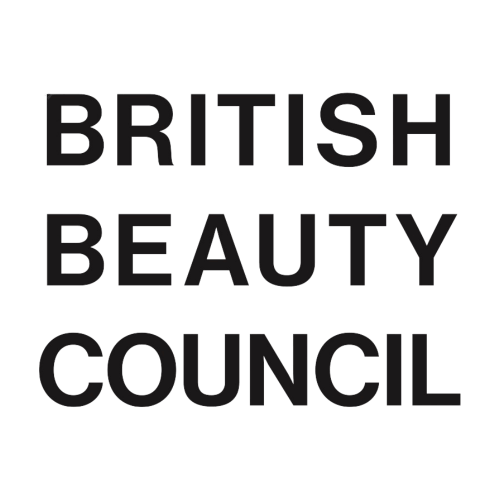Packaging
With 95% of cosmetic packaging thrown away, packaging is one of the biggest sustainability challenges facing the beauty industry.
Whilst beautiful packaging can be enticing, it is not unusual for cosmetics to end up with more packaging than product, and the waste and the cost is staggering. Recycling single-use plastics is not necessarily the answer, we know the rates of recycling are low, when it comes to the beauty industry only 14% of packaging actually makes it to a recycling plant, only 9% is recycled and the rest heads directly to landfill. Most of this is single use plastic packaging which can take up to 450 years to breakdown in landfill.
Everyone can play a part towards living a more sustainable life, but businesses should set an example by making sustainability an easier choice for everyone. Having packaging at the forefront of your buying decision directly impacts how brands sell their products. As a result, many brands are committing to 100% recyclable packaging by 2025 in line with the UK Plastics Pact.
THINGS TO LOOK OUT FOR

Sustainable Wood
Sustainable Wood
The Forest Stewardship Council (FSC) is an international non-profit organisation dedicated to promoting socially beneficial, environmentally appropriate, and economically viable management of the world’s forests.
FSC is widely seen as the best standard but these days there is little to choose between PEFC and FSC particularly with respect to European sources. FSC and PEFC take precautions to make sure that a forest is harvested at a sustainable rate.
As trees are vital in our global action on climate, it is important to buy wood products that bear the FSC or PEFC label whenever possible.

Aluminium
Aluminium
Aluminium is lightweight, rust-proof and can be infinitely recycled, and the rates of recycling are very high. Over 75% of all aluminium ever extracted from the earth is still in use today.¹ We should acknowledge however that aluminium is a precious commodity and that its manufacturing is a heavy burden on the planet. So it’s vital that we recycle all our aluminium packaging.
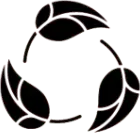
Biodegradable
Biodegradable
Biodegradable (not to be confused with ‘compostable’) is a material that is capable of decomposing with the aid of microorganisms, such as fungi and bacteria. There is no official certification for biodegradability. Almost everything biodegrades eventually, though the material may still be hazardous to the environment once broken down.

Recycled
Recycled
Material made of waste materials that have been recovered, reprocessed and converted into reusable materials. You can differentiate between pre- and post- consumer materials that are recycled.

PET
PET
PET (also PETE) is a general-purpose thermoplastic plastic material and is the most recycled and reusable of all plastics. It is commonly used for bottles and containers for food, drinks and cosmetics. Coloured PET is much harder to recycle, so try to buy clear bottles when possible.

Plastic Free
Plastic Free
The product contains no fossil fuel plastic. You can reduce your plastic footprint by buying plastic free products. Look out for the Plastic Free official certification to ensure that a product or packaging is 100% plastic free.
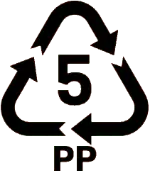
Polypropylene (PP)
Polypropylene (PP)
PP is made from thermoplastic commonly used to make products that need to be waterproof, heat proof and strong. These can include cosmetics tubes, reusable water bottles, toys and car parts like bumpers. Although it is technically recyclable, only 1% of PP is recycled globally.
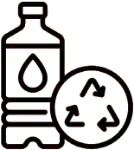
Reusable/Refillable
Reusable/Refillable
Packaging is defined as reusable when it is capable of being used repeatedly for the same use case without impairing its protective function.
We are starting to see a revolution in refill and reusable packaging for personal care products such as shampoo, shower gels and even mascara which will help us to reduce waste and dependency on single-use products and packaging.
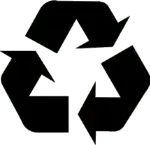
Recyclable
Recyclable
For a product’s packaging to be recyclable, it must have the potential to be recycled into another useful product. However, this does not guarantee it will be recycled, as some materials are simply not cost-effective to do so.
Some materials are kerbside recyclable while others have to be taken to a specific collection location. Avoid products that use flexible thin and multi-layered plastics as they are very difficult to recycle, as are coloured plastics.
Small packaging items such as lipsticks and mascaras will also not be recycled if pu with household recycling. Look out for the ‘On Pack Recycling Label’ icons on packaging to provide a steer on what can and cannot be recycled at home, or check with your local council collection scheme as to which materials they will accept.
Where an item can’t, or it’s not clear, look out for a growing number of in-store take-back schemes– the WRAP Recycling Locator Tool is a great resource (filter on ‘Where to recycle a specific material’ and then ‘Beauty & grooming’).
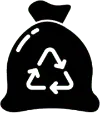
Zero Waste / Waste Zero
Zero Waste / Waste Zero
We create two billion tonnes of waste every year and the zero-waste movement has grown rapidly to address this. The way to think about it is a waste zero approach to product design which will include a set of principles: responsible production, consumption, reuse and recovery of all products, packaging, and materials, without burning them, and without discharges to land, water or air. Look out for products that have been designed using Cradle to Cradle principles or certification.

PCR PET
PCR PET
This stands for post-consumer recycled PET (PCR PET) material. It is required to be collected from residential recycling systems or after-market recycling systems in order to be qualified as PCR PET, in other words, it has to have actually been used by a consumer before recycling.

RPET
RPET
This is a more general term for recycled PET, which can be collected from many different recycling schemes, such as industrial waste, excess plastic packaging etc.
